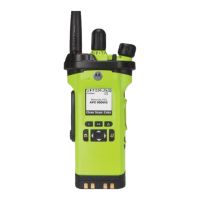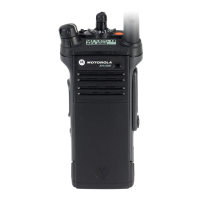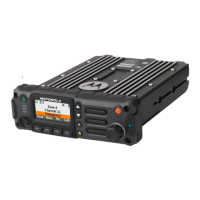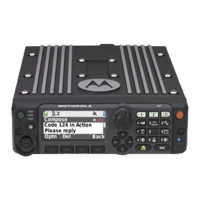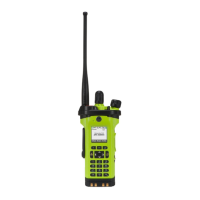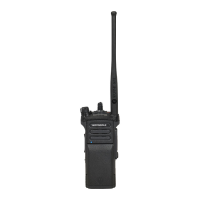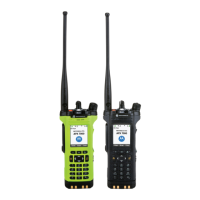Theory of Operation: Global Positioning Sytem (GPS) 3-53
3.2.7.5 Key Zeroize
The encryption keys can also be manually erased if infinite key retention is not turned on in
codeplug, by holding down the Side Top button and emergency buttons during radio power-up.
These two button inputs both connect to a dual transistor Q2537, which will release the
Key_ZEROIZE signal sensed by MACE's TPR0 (U2510-M2). Once this condition is sensed (floating
high), the encryption keys will be erased.
To troubleshoot the encryption circuitry, refer to the flowcharts in Chapter 5 “Troubleshooting Charts”.
3.3 Global Positioning Sytem (GPS)
The APX 2000/ APX 4000 GPS architecture employs the Texas Instruments NL5500 GPS IC
(U1301) (located on the Main Board) which decodes GPS signals at 1575.42 MHz (L1 band). It is
capable of producing a final position solution including full tracking and data decode capability. The
GPS signal is received by the main RF/GPS combination antenna. The GPS signal is then diplexed
at the antenna port via a series resonant network, C1315 and L1316 which provides a very low
capacitive load to the transceiver. Additional GPS diplexing components include L1117 and C1122
which provide proper termination at the transceiver path output to minimize GPS signal leakage at
the antenna port tap point at C1314. The GPS signal will then go through a SAW filter (FL1301), LNA
(U1304), and a second SAW filter (FL1303), which then connects to the NL5500’s GPS RF input
(U1301 pin L2). The NL5500 IC is connected to the main OMAP processor via UART2. It is a two
wire UART interface (TX and RX with no handshaking).
The GPS receiver is setup in an autonomous continuous navigation mode where the current position
is updated once per second. The GPS receiver continuously tracks satellites for as long as the radio
is powered on to ensure the best possible accuracy. In the event the radio loses visibility of the
satellites due to terrain or environmental factors such as driving through a tunnel or entering a
building, the GPS will temporarily lose its position fix. If the signal outage is long enough, a power
savings algorithm will then cycle the GPS in and out of a sleep mode to save battery life until the
radio has moved back into an environment where the GPS signal is present.
The following table lists the power, clock, and I/O connections from the GPS IC to various
peripherals.
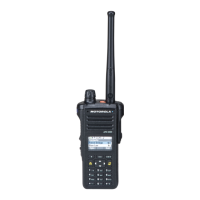
